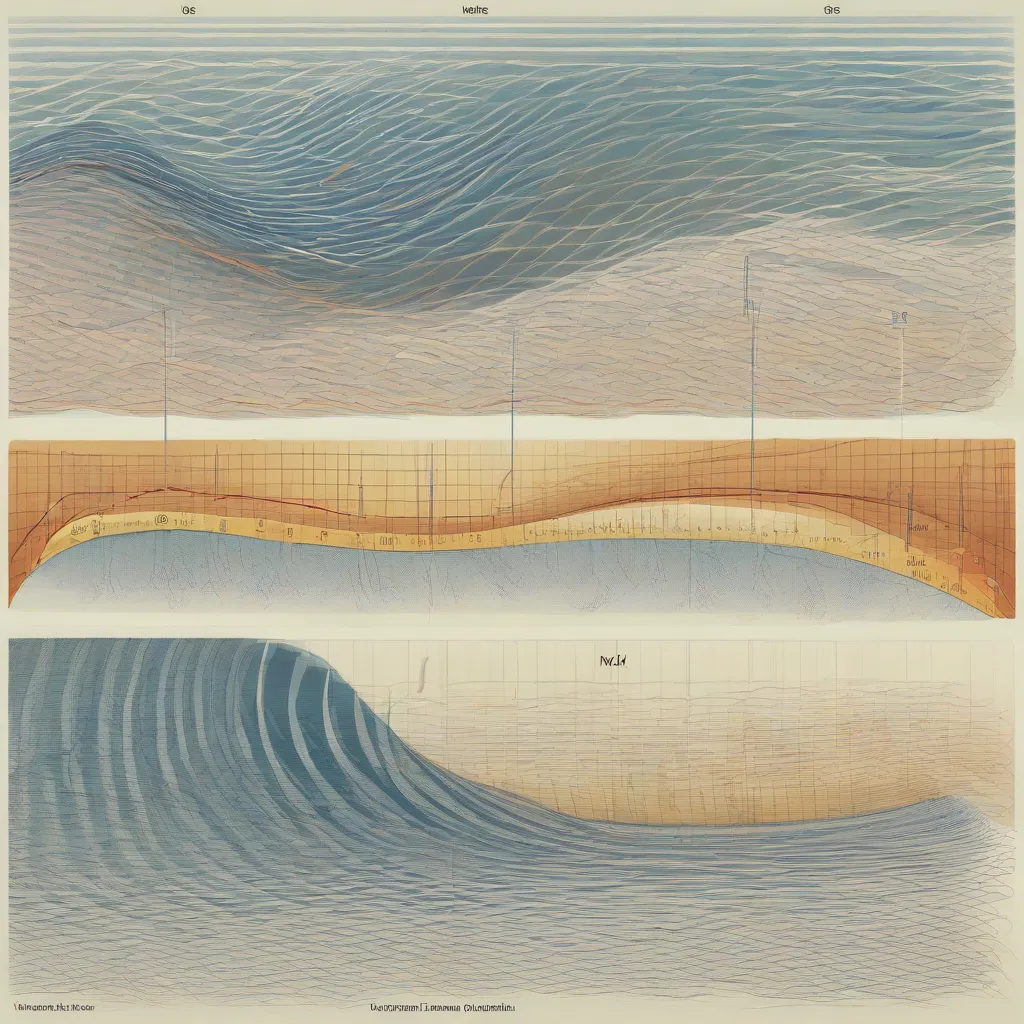Have you ever stood on a beach, mesmerized by the rhythmic crashing of waves? Or perhaps you’ve felt the ground tremble beneath your feet during an earthquake? These are all examples of mechanical waves in action. But what exactly are these waves, and more importantly, what do they travel through?
Unveiling the Mystery of Mechanical Waves
In simple terms, a mechanical wave is a disturbance that travels through a medium, transferring energy as it goes. Think of it like this: imagine you drop a pebble into a still pond. The impact creates ripples that spread outward from the point of disturbance. These ripples are the waves, and the water is the medium they travel through.
The Medium Matters: Why Mechanical Waves Need a Substance
Unlike electromagnetic waves, which can travel through the vacuum of space, mechanical waves need a medium to propagate. This medium can be a solid, liquid, or gas.
- Solids: Sound waves, for example, travel through solids like the walls of your home, allowing you to hear music from another room.
- Liquids: Ocean waves are a classic example of mechanical waves traveling through a liquid medium.
- Gases: When you speak, your vocal cords create vibrations that travel through the air, carrying your voice to the ears of others.
The type of medium affects the speed and behavior of the wave. For instance, sound travels faster in water than in air.
Different Types of Mechanical Waves: Transverse and Longitudinal
While all mechanical waves need a medium, they don’t all move in the same way. There are two main types:
1. Transverse Waves
Imagine holding a rope taut and flicking your wrist up and down. You’ll create a wave that travels along the rope. This is a transverse wave, where the particles of the medium (in this case, the rope) move perpendicular to the direction the wave travels. Light waves are also transverse, but they don’t require a medium to travel.
2. Longitudinal Waves
Now, imagine pushing and pulling a slinky toy. You’ll create a wave where the coils bunch up and spread out along the length of the slinky. This is a longitudinal wave, where the particles of the medium move parallel to the direction the wave travels. Sound waves are also longitudinal waves.
 Mechanical Waves Illustration
Mechanical Waves Illustration
Planning Your Travels? Consider the Waves!
Even when planning a trip, understanding waves can be surprisingly relevant. For example, if you’re planning a surfing holiday in Bali, knowing about wave periods, tides, and how the ocean floor affects wave formation can enhance your experience. Similarly, if you’re visiting a place prone to earthquakes, being aware of seismic waves and how they travel through the earth’s crust is crucial for safety.
FAQs About Mechanical Waves
- Can mechanical waves travel through space?
- No, mechanical waves need a medium to travel, and space is a vacuum.
- What is the fastest mechanical wave?
- The speed of a mechanical wave depends on the medium. However, sound waves travel fastest in solids, followed by liquids and then gases.
- Are all waves mechanical?
- No, electromagnetic waves, like light and radio waves, do not need a medium and can travel through space.
 Travelers Planning a Trip
Travelers Planning a Trip
Travel planning, much like understanding the science of waves, involves considering various factors to ensure a smooth and enjoyable journey. For insightful travel tips and information, be sure to explore more articles on travelcar.edu.vn.
Remember, the world is full of fascinating phenomena, from the waves crashing on the shore to the seismic rumbles deep within the Earth. By understanding these natural forces, we gain a deeper appreciation for the world around us.